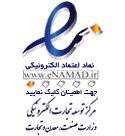ABSTRACT
Background and Objective: It is desirable for athletes, especially female soccer players, to consume beetroot beverage during training as a way of improving both health and performance ,. Therefore, the objective of this study was to assess the effect of beetroot juice intake on lipid profile in female soccer players.
Methods: Young and well-trained female soccer players (N=20) were included in a randomized placebo-controlled crossover study. They were categorized into two groups: experimental (beetroot beverage, n=10, age: 23.20±0.91 years, BMI: 22.57±1.54(kg/m2)) and control (placebo, n=10, age: 23±0.81 years, BMI: 23.13±0.58(kg/m2)). Subjects drank either 200 ml concentrated beetroot beverage or an equal amount of placebo 2 hours prior to their trainings for six weeks (18 session). Blood samples were taken 24 hours before and after trials. All data were compared in pretest and posttest via paired sample t-test and independent sample t-test. All statistical analyses were performed at (P≤0.05) by SPSS (version22).
Results: Beetroot juice intake increased plasma high density lipoprotein (t= -60.88, P<0.05). Triglyceride, total cholesterol, and low density lipoprotein were reduced (P<0.05). Compared with placebo, beetroot juice reduced the concentrations of triglyceride, total cholesterol, and low density lipoprotein (P<0.05).
Conclusion: Regular beetroot juice intake has significant effects on lipid profile in female soccer players, hence its suggestion for preventing diseases such as hypercholesterolemia and hypertension in female soccer players.
Key words: Soccer, Training, Dietary Supplements, Lipids.




